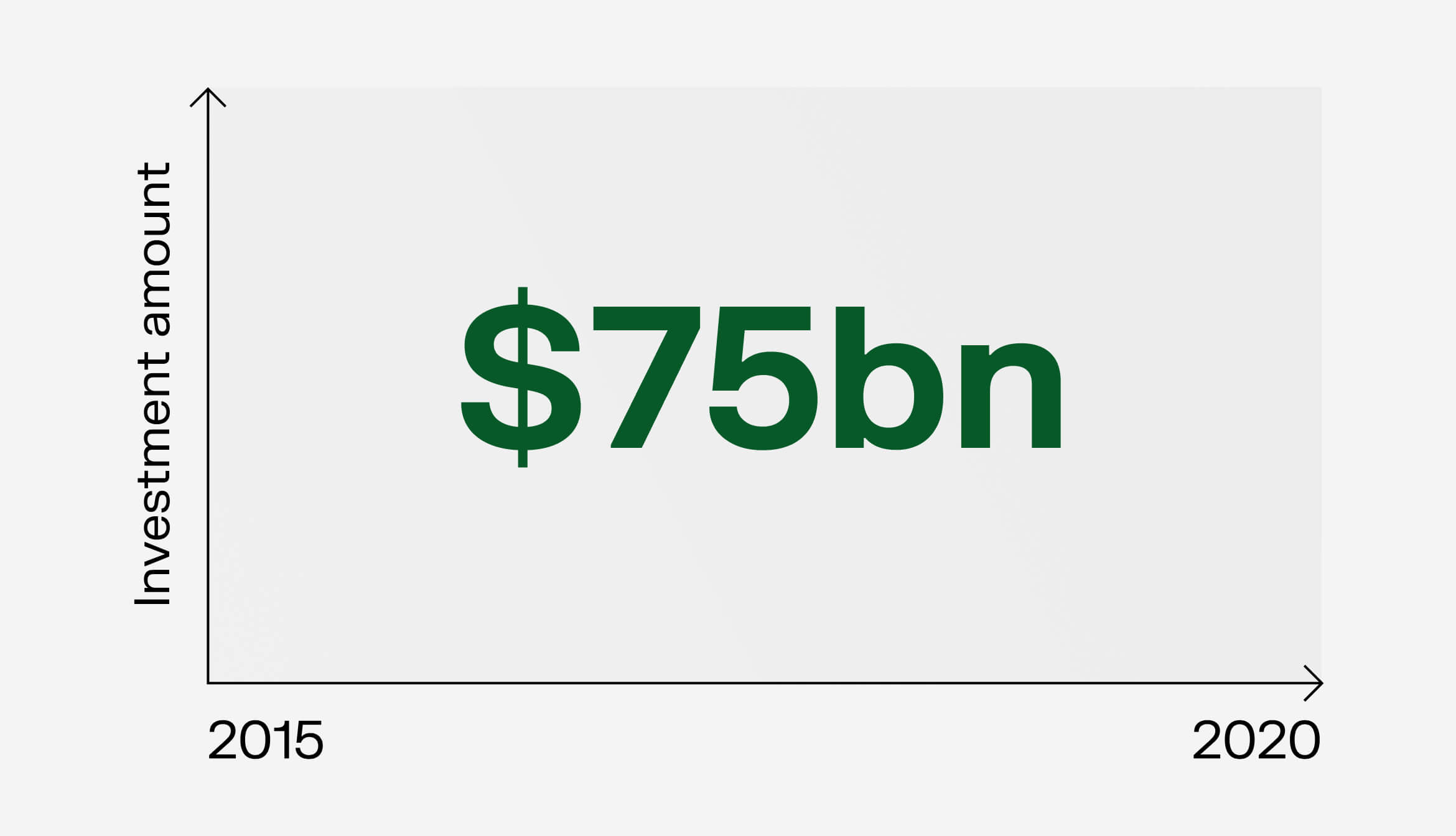Relations between China and Latin America have strengthened in recent years, with the COVID-19 pandemic as a turning point. Nearly $75 billion was invested in the region over the five-year period between 2015 and 2020.
With this in mind, different specialists in investment and the economics of the region gathered for the M&A Latam Community webinar on 24 November 2021: Investment opportunities between Latin America and China. The subjects to be discussed were: the opportunities, challenges and gambles involved in Chinese investment in Latin America and vice versa.
How are investment opportunities between China and Latin America evolving?
Ignacio Tornero from Chile asserted that: “China is now South America’s greatest ally “, given that about 30 billion dollars annually have been invested to date, resulting in an FTA (Free Trade Agreement) between China and Chile. He also said that after the impact of the COVID-19 pandemic, China strengthened this relationship, making it Chile’s current favorite export destination, and accounting for 40% of total exports.
Claudia Martínez, speaking from Peru, said that relations between Peru and China have been transformed. According to her, “investment opportunities have changed, but the relationship remains strong”. Peru’s main exports to China are minerals and commodities and copper has become more important, which has helped to attract more resources for Peru. Martínez points out that in this area there has been an increase of 60% compared to the same period last year. This indicates a promising future for the relationship since, as Martínez points out, ECLAC reported that Peru was the country that received the most investment (behind Brazil) in 2021, mainly in energy projects, such as the infrastructure project Puerto de Chancay, the San Gabán II hydroelectric plant.
In Argentina the situation is similar. Juan Sonoda says that China is Argentina’s main export destination. Products such as soybeans, meat and other raw materials are the most significant for the binational relationship. Like Peru, Argentina has large infrastructure projects financed by China. Among these are dams in southern Argentina, railway branches such as Belgrano Cargas, as well as energy projects that include a nuclear power plant and photovoltaic installations.
In terms of retail, Valentina Billeke cites the positive relationship between Falabella and China, where the latter has been a loyal ally of the Chilean company. Billeke sees the automation services provided by China as one of the most important factors in the relationship, in addition to the steadfast business commitment that has allowed a balance to be maintained between the investment, purchase and sale of products, thanks to China’s expertise in markets, export and import matters.
What are the main barriers to entry that companies encounter with China and vice versa?
Companies from both countries face similar barriers and challenges. Chinese companies may struggle to gain a foothold in each country. According to Tornero, the greatest challenge in Chile is the cultural differences in doing business as well as the expected regulatory variants between the different types of economy.
In Peru, according to Claudia Martínez the picture is the same. Chinese companies entering Peru, need a wide knowledge of the political and legal environment, as well as environmental restrictions. So one of the solutions should be to “promote sound knowledge between both parties”.
According to Juan Sonoda, Argentina has the same challenges but with additional issues. Argentina provides guidance on how to address barriers by both parties making their expectations clear and understanding how the binational relationship operates. China’s business culture is different, so it is important to see the differences as a challenge. For example, in Argentina you have to take into account the holiday periods, the influence of the unions and the management of public relations, since Chinese companies tend to focus on the government and do not take into account these factors. Sonoda believes it is important to pay attention to political and cultural questions.
For Valentina Billeke, the barriers are both cultural and political. “In fact there is very little knowledge of Asian culture in South America; we know very little about how trade relations are carried out,” Billeke emphasizes the need to respect Chinese culture, since their legal system can be more rigorous. She therefore recommends, as a starting point, finding a partner to help in the tax arena for each specific country.
What are the opportunities for Latin American companies in China like?
The outlook is positive, but investment is currently limited to commodities exports: minerals and agricultural products. Ignacio Tornero emphasizes that the situation in Chile is in line with the rest of Latin America, but highlights that about 1200 companies exported products to China through e-commerce or by exporting products directly. However, of these, only an average of 40 have a permanent establishment there, as it is a bigger challenge to achieve strategic positioning in China.
Peru also has the export of products as the most important aspect of their relationship. In the words of Claudia Martínez, the Chinese consumer likes exotic products; an example of this is the popularity of Peruvian Red Dragon grapes,. So his main recommendation is to use exports as a form of entry, where hiring a distributor in China becomes a valuable opportunity to increase your presence. As for other mechanisms, Martínez points out that you need to explore the online market using China’s own platforms. In the other direction China can enter Peru by establishing a representative office, which may have limits on its operations. . Another way is the joint venture or direct entry as a totally foreign-owned company, a route with many requirements that, even if well-managed, can take 4 to 6 months.
For Argentina the key aspect of the relationship is also the export of commodities. However, it is the one country where political changes have the biggest impact, so you have to assess the political landscape, says Juan Sonoda. For instance meat exports were suspended recently, which directly affected the relationship with the market. This is because the relationship between Argentina and China, commercially speaking, has a greater impact on the government front, so, a local company should make use of these relationships and subsequently hire Chinese distributors or establish a commercial relationship with a partner there.
Which sectors are of most interest in the Chinese market?
The Chinese presence in Chile is mostly based on energy and mining, but recently there has been diversification into aquaculture and agriculture. Up to 80% of demand for materials such as lithium and copper, as well as the forestry industry are very dependent on China, says Ignacio Tornero. Nevertheless: “products such as wine, cherries, meat or fish are dominating the market right now, “.
In Peru, says Claudia Martínez, the most attractive sectors are non-traditional exports, such as grapes, avocados and fish. China’s interests are in addressing Peru’s infrastructure gap, and investing in transport, infrastructure and energy.
Argentina’s most popular exports are soya and its derivatives. Juan Sonoda, however, thinks that the ideal relationship would be if China had land in Argentina and grew soya on it but there is legislation that prohibits foreign companies owing land. . Otherwise, China’s presence is large, since it is well-established in the search for gold and copper mines, as well as lithium.
The relationship with Falabella has remained stable, demonstrating the importance of keeping a balanced relationship between suppliers and distributors. Valentina Billeke says that: “always dealing with the same suppliers generates trust and strengthens the relationship, so you only look for different suppliers when you want new products. With China we have a long-term relationship that was able to endure during the COVID-19 pandemic and in fact, it expanded, said Billeke, who ended by saying that the important thing when dealing with China is to plan a long-term project that can grow stronger with time.
What are the key tips you would give to a Chinese company on landing in LA?
For Peru and Argentina, the advice would appear to be similar. Claudia Martínez recommends that any Chinese company investigates how Peru deals with legal, political, social and environmental issues. The Chinese are mostly interested in brownfield projects so you need to find places where they already have a presence and there is an established company. Juan Sonoda invites Chinese companies to conduct a survey of conditions in the country to form the basis for developing a strategy. A Joint Venture approach would be the best route.
Is your country offering any legal or tax breaks to Chinese companies to invest?
According to Claudia Martinez, “Peru has a high level of cooperation with China and this allows for a closer bond. Legally there is a bigger rapprochement with Chinese investors than with other countries.” In fact, “China was the first country that the recent government tried to approach to strengthen investments and reinforce the relationship.” Peru and China have had an FTA since 2010 and negotiations are currently in progress to expand it.
In Argentina the government has developed a state-to-state relationship with the Chinese, establishing agreements, treaties and accords and generating a regulatory framework that facilitates Chinese investment. Negotiations seek to establish direct contracts, with financing from China and the hiring of Argentinian labor and suppliers.
What has been your experience advising companies on opening in China?
Ignacio Tornero was an advisor to two companies that managed to gain a foothold in the Chinese market: the biotech company Crystal Lagoons and the main law firm in Chile: Carey, which managed to open an office in Shanghai., Tornero points out that this is a very challenging route, particularly in terms of regulatory issues since you need to consider the culture and functioning of the country before you get there. So he recommends an in-depth study of the legal, commercial and cultural aspects of China before you start.
Different countries in Latin America face similar barriers in their relationship with China. Cultural and political issues are the main challenges.
There are many opportunities to acquire investment from China , because the Chinese market wants Latin American products.
Infrastructure development in Latin America has a great partner in China, as it looks for investment and for raw materials for its own country.
This conversation, supported by the M&A Latam Community, helps explain the conditions behind investment trends in Latin America, showing that the strengthening of binational relations, in this case with China, is a significant milestone in the economic development of the continent.







